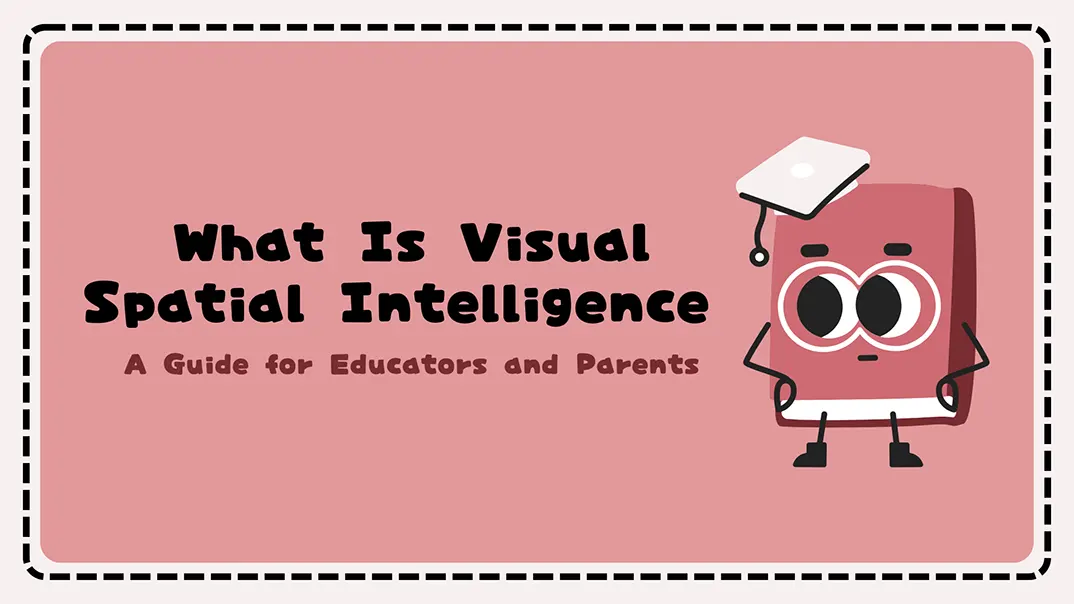Have you ever wondered why some children excel at reading maps, assembling puzzles, or building intricate structures with blocks while others struggle? Why do some students grasp geometry concepts with ease but find it hard to follow verbal instructions? These differences may stem from varying levels of visual spatial intelligence. As a parent or educator, recognizing and understanding this form of intelligence is crucial, but what exactly does it mean, and how can it influence a child’s learning and development?
Visual spatial intelligence is the ability to visualize, manipulate, and understand spatial relationships between objects in one’s mind. This type of intelligence allows individuals to interpret visual data, mentally rotate shapes, and navigate spaces with accuracy. Children with strong visual spatial intelligence often thrive in environments that involve diagrams, models, maps, or hands-on activities.
Understanding visual spatial intelligence can unlock a new dimension of learning potential in children. Whether you’re a teacher designing more effective lesson plans or a parent looking to support your child’s cognitive strengths better, this comprehensive guide will equip you with the tools and strategies you need.
Howard Gardner’s Theory of Multiple Intelligences
In the 1980s, Harvard psychologist Howard Gardner introduced a groundbreaking framework that reshaped how educators and psychologists perceive intelligence. Rather than subscribing to the traditional view that intelligence is a single, measurable factor (such as IQ), Gardner proposed that there are multiple distinct types of intelligence. His theory of multiple intelligences, first introduced in his 1983 book Frames of Mind, suggests that people possess unique blends of cognitive strengths that influence how they learn, communicate, and interact with the world.
The 8 Core Intelligences:
- Linguistic Intelligence: The ability to use words effectively, whether in writing, speaking, reading, or listening.
- Logical-Mathematical Intelligence: The capacity for inductive and deductive reasoning, number sense, and abstract thinking.
- Visual Spatial Intelligence: The ability to perceive the visual world accurately and to recreate, manipulate, or interpret visual information.
- Bodily-Kinesthetic Intelligence: The skill to use one’s body or hands to solve problems or create products.
- Musical Intelligence: Sensitivity to sound patterns, tones, rhythm, and music.
- Interpersonal Intelligence: The capacity to understand and interact effectively with others.
- Intrapersonal Intelligence: A deep understanding of oneself, including one’s emotions, motivations, and goals.
- Naturalistic Intelligence: The ability to identify patterns in nature and work effectively in the natural world.
Each type is autonomous yet interconnected, and no single intelligence is superior to the others. This holistic approach recognizes that individuals learn and express themselves in diverse ways, which traditional educational systems may overlook.
Understanding Gardner’s theory helps frame visual-spatial intelligence not as a niche skill but as a core component of human cognition. In recognizing its place among the multiple intelligences, educators and parents can better tailor their strategies to support learners who excel in spatial reasoning, imagination, and visual problem-solving.
What Is Visual Spatial Intelligence?
Visual spatial intelligence stands out as one of the most practically observable intelligences in both children and adults. It refers to the capacity to think in three dimensions, visualize objects from different angles, and understand spatial relationships. This form of intelligence involves the brain’s right hemisphere, which is responsible for processing visual input, spatial orientation, and the relationships between objects.
People who are strong in visual spatial intelligence often think in pictures rather than words. They may find it easier to recall visual details, interpret graphs and diagrams, and construct or deconstruct visual representations. Children with strong visual spatial abilities often excel in art, geometry, or tasks that involve design and construction. They tend to learn best through visual aids like maps, charts, models, and videos.
By including visual spatial intelligence in his theory, Gardner validated the talents of learners who might struggle in traditional, linguistically-focused classrooms. His theory empowers educators to design more inclusive curricula that tap into the diverse strengths of their students. It also encourages parents to appreciate their child’s unique learning profile, fostering environments that support not just verbal or logical development but also spatial, artistic, and creative growth.
Examples of Visual Spatial Intelligence
Visual-spatial intelligence is ubiquitous in everyday life. Here are some real-life examples of how people use spatial skills in everyday tasks, creative projects, and physical environments.
- Walking Through a Crowd
Navigating a busy hallway or playground without bumping into others requires rapid visual-spatial calculations. A child must judge distances, anticipate movement, and adjust their own path—all in real-time. - Tying Shoelaces
This task involves complex hand-eye coordination and spatial sequencing. Children must understand how to form loops, cross them, and pull them tight in a specific order—visualizing the steps mentally before completing them physically. - Fitting Objects into a Space
Whether it’s packing a lunchbox, organizing school supplies, or arranging puzzle pieces, children use spatial awareness to judge size, shape, and fit. This ability reflects both visual planning and structural understanding. - Drawing Maps or Floor Plans
Creating a map of their bedroom or a path from home to school shows a child’s ability to translate a 3D space into a 2D representation. This demonstrates mental mapping and directional awareness. - Using Visual Cues in Sports
Catching a ball, timing a jump, or coordinating with teammates all require spatial perception. Children rely on visual-spatial skills to anticipate movement and adjust their own position accordingly. - Assembling Furniture or Models
Building a model airplane or putting together a small shelf from instructions requires spatial sequencing and the ability to imagine the final structure. It combines visualization, orientation, and precision. - Reading Graphs and Diagrams
When students interpret data charts or science diagrams, they’re mentally processing visual-spatial information—understanding direction, flow, scale, and relationships between elements.
Why Are Visual Spatial Skills Important For Children?
Visual spatial intelligence plays a significant role in how children perceive the world and solve problems within it. From the early years of development, children use visual and spatial cues to understand shapes, sizes, distances, and positions. These foundational abilities impact not just how they perform in school but also how they interact with their environment, express creativity, and develop independence.
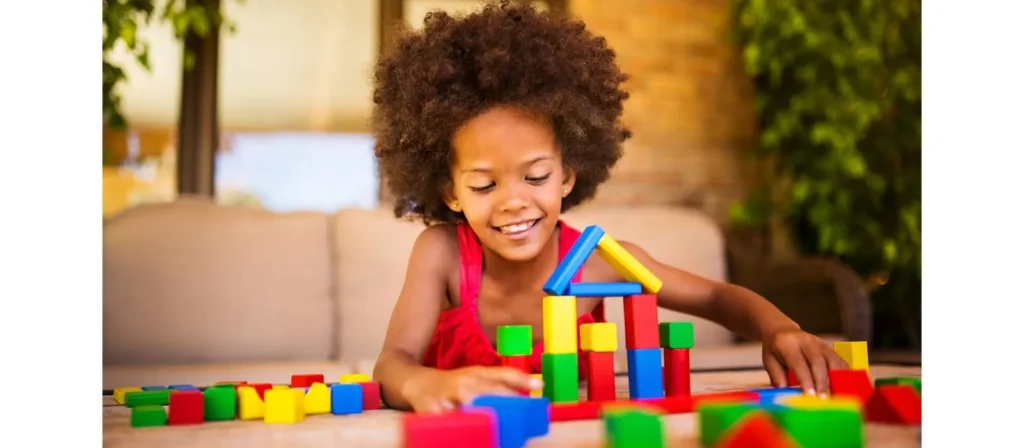
Enhancing Academic Success Through Spatial Reasoning
Academic performance, particularly in subjects like mathematics and science, is strongly linked to spatial reasoning. Children who demonstrate high levels of visual spatial intelligence often excel in understanding geometric concepts, visualizing number lines, or interpreting diagrams and charts. For instance, a student might solve a geometry problem by mentally rotating shapes or using a flowchart to grasp a complex science concept. These abilities allow children to comprehend abstract ideas in ways that purely verbal or numerical explanations may not offer.
Moreover, visual learners often benefit from classroom tools such as mind maps, infographics, and 3D models. When educators integrate these tools into lessons, students with strong spatial skills feel more engaged and are able to retain information more effectively.
Supporting Practical Life Skills and Independence
Outside the classroom, visual spatial intelligence enables children to navigate and organize their world. A child with strong spatial skills can find their way around unfamiliar environments, pack a schoolbag efficiently, or follow multi-step visual instructions without confusion. These skills translate into greater independence as they can complete tasks with minimal guidance.
Think about the coordination needed to assemble a model airplane, fold laundry, or arrange furniture in a dollhouse—each of these tasks taps into a child’s spatial reasoning. With practice, these experiences enhance a child’s confidence and teach them to approach challenges systematically.
รับแคตตาล็อกฉบับเต็มของเรา
หากคุณมีคำถามหรือต้องการใบเสนอราคา โปรดส่งข้อความถึงเรา ผู้เชี่ยวชาญของเราจะตอบกลับคุณภายใน 48 ชั่วโมง และช่วยคุณเลือกผลิตภัณฑ์ที่เหมาะสมกับคุณ
Fueling Creativity and Imaginative Thinking
Visual spatial intelligence is deeply connected to creative expression. Children who naturally think in images often gravitate toward activities like drawing, painting, or building things from their imagination. They enjoy visualizing new ideas and bringing them to life through art, design, or construction.
Creative projects such as crafting a collage, building a diorama, or designing a video game level allow these children to use their visual strengths in meaningful ways. When their creativity is encouraged, it often leads to improved focus, perseverance, and even better emotional regulation.
Improving Reading, Writing, and Visual Organization
While typically associated with math or art, spatial skills also impact การพัฒนาทักษะการอ่านออกเขียนได้. Children need to distinguish between similar-looking letters, organize writing on a page, and understand the layout of books or worksheets. Those with well-developed visual spatial intelligence often find these tasks easier, while others may struggle with orientation and spacing.
For example, a child might mix up letters like “p” and “q” or write unevenly across a page. These issues can sometimes be misinterpreted as purely academic weaknesses when they may actually stem from underdeveloped spatial processing. With the right support—such as visual cues, highlighted lines, or spatial scaffolding—many children can improve both their spatial awareness and literacy skills in tandem.

Characteristics of Children with Developed Visual-spatial Intelligence
Children with strong visual spatial intelligence often exhibit unique ways of thinking, learning, and interacting with their environment. They tend to understand the world through images, patterns, and spatial relationships rather than through words or numbers. Recognizing these characteristics early allows educators and parents to tailor learning experiences to suit their strengths better.
Common traits of children with developed visual spatial intelligence include:
- Strong sense of direction and spatial orientation: They can easily navigate spaces, remember routes, or mentally picture how to get from one place to another.
- Enjoyment of visual puzzles and construction activities: These children often gravitate toward building blocks, Lego, 3D puzzles, and model-making.
- High sensitivity to visual details and aesthetics: They notice patterns, shapes, colors, and symmetry more readily than their peers and often express this through art or design.
- Ability to visualize and manipulate objects mentally: Whether rotating objects in their mind or imagining outcomes of physical changes, they rely heavily on mental imagery.
- A preference for learning through diagrams, maps, and pictures: Visual aids like infographics, charts, and spatial models enhance their understanding far more than verbal instructions alone.
- Creativity in drawing, sketching, or storytelling through images: These children often communicate ideas or emotions visually, even before they can verbalize them clearly.
- Difficulty with linear, text-based learning methods: Traditional classroom settings that focus heavily on written or spoken instruction may frustrate them if not balanced with visual-spatial elements.
High vs. Low Visual Spatial Intelligence
| ด้าน | High Visual Spatial Intelligence | Low Visual Spatial Intelligence |
|---|---|---|
| Mental Visualization | Can easily imagine and rotate objects in the mind | Struggles to picture shapes or spatial arrangements mentally |
| Problem Solving | Solves puzzles and spatial tasks quickly using visual strategies | Relies heavily on trial and error or verbal explanations |
| Drawing and Design | Enjoys sketching, diagramming, and creating visual representations | Avoids drawing tasks or struggles with spatial layout on paper |
| Geometry and Math | Grasps spatial math concepts like symmetry, area, and angles easily | Finds geometry abstract and difficult to visualize |
| Navigation and Map Use | Understands directions, maps, and spatial relationships with ease | Gets lost easily or struggles with left-right orientation |
| Organizing Space | Packs or arranges items efficiently, considers dimensions intuitively | Often creates clutter or misjudges space when organizing |
| Attention to Visual Details | Notice patterns, alignment, and visual inconsistencies quickly | Misses visual cues or ignores spatial relationships |
| Learning Preference | Prefers diagrams, models, and visual aids over verbal explanations | Prefers step-by-step instructions or auditory support |
Common Challenges Faced by Children with Poor Visual-Spatial Intelligence
While visual spatial intelligence can be a major strength, its underdevelopment can lead to a wide range of difficulties that may impact a child’s academic performance, emotional well-being, and confidence. Children with poor visual spatial skills often find tasks involving visual organization, spatial reasoning, or interpreting diagrams particularly frustrating. Recognizing these challenges early is key to providing targeted support and reducing stress for both students and caregivers.
One of the most noticeable struggles is in subjects like geometry, science, or even basic arithmetic, where visual patterns and spatial arrangements are essential. These children might have trouble reading maps, understanding spatial relationships in math problems, or grasping the organization of a chart or timeline. They may feel overwhelmed by multi-step visual instructions or fail to visualize concepts that others easily picture.
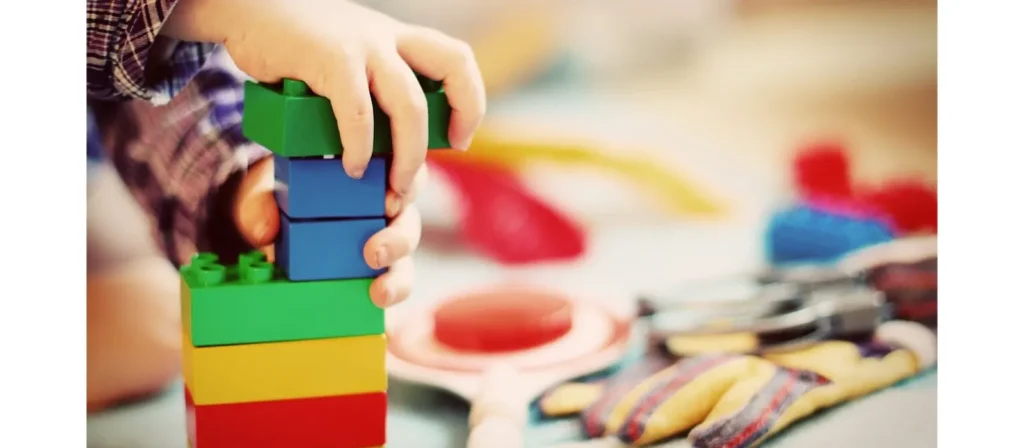
In daily classroom activities, these difficulties may appear in more subtle ways. For instance, a child might:
- Have messy or disorganized handwriting due to poor spatial awareness on the page.
- Struggle to copy diagrams or information from the board accurately.
- Misalign numbers in math problems, leading to calculation errors.
- Find it hard to judge distance, direction, or spatial arrangement in physical activities.
These issues can create a domino effect, often leading to frustration, reduced motivation, and a lack of confidence. Children may begin to avoid tasks involving drawing, construction, or visual problem-solving, seeing them as too difficult or embarrassing.
Socially, children with low visual-spatial intelligence might also have difficulties interpreting visual cues in their environment, such as facial expressions, body language, or personal space. This can make it harder for them to navigate peer interactions or feel comfortable in group activities.
Fortunately, with awareness and the right interventions, many of these challenges can be managed or even overcome. In the upcoming section, we’ll explore practical and effective strategies for improving visual-spatial intelligence.
How to Improve Visual Spatial Intelligence?
Visual spatial intelligence is not a fixed trait—it can be developed and strengthened with intentional activities, supportive instruction, and consistent practice. Whether a child is naturally inclined toward visual thinking or finds spatial tasks challenging, the right strategies can foster meaningful growth. Parents, educators, and caregivers all play a vital role in shaping and supporting this aspect of cognitive development.
1. Create Visually Rich Learning Environments
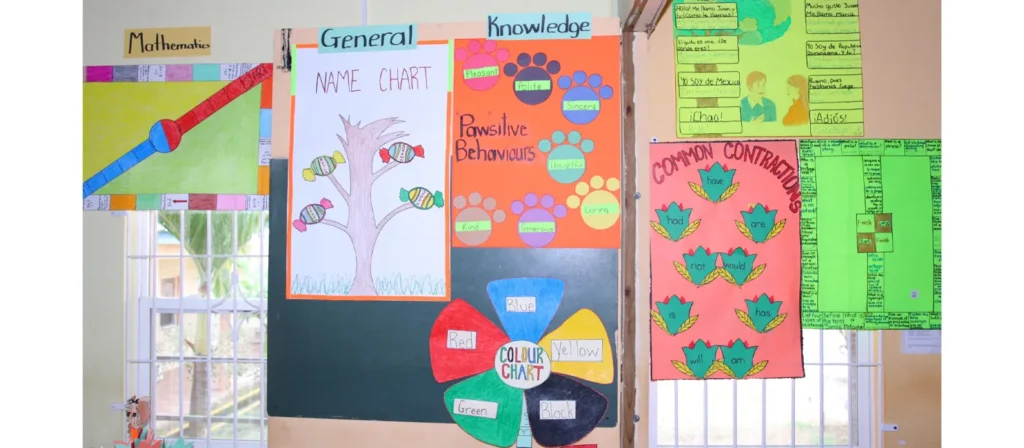
การ physical environment where a child learns can greatly influence the development of visual spatial intelligence. Classrooms and homes that are rich in visual stimuli help children engage more deeply with information, organize their thoughts, and make spatial connections intuitively.
To create a visually supportive environment, consider:
- Decorating learning spaces with labeled diagrams, posters, and maps.
- Displaying student work or visual timelines to reinforce spatial sequences.
- Using color-coded bins, folders, or shelves to encourage visual organization.
- Incorporating anchor charts or step-by-step visual instructions for tasks.
Children naturally absorb information from their surroundings. When educational materials are presented visually and consistently displayed in their environment, they are more likely to understand and retain them. This also supports students who may struggle with verbal explanations by offering another path to comprehension.
2. Incorporate Hands-On Learning Activities
Children don’t just learn by seeing—they learn by doing. When it comes to building visual-spatial intelligence, tactile, hands-on experiences are among the most effective tools available. These activities help link visual input to physical action, reinforcing spatial concepts through movement and manipulation.
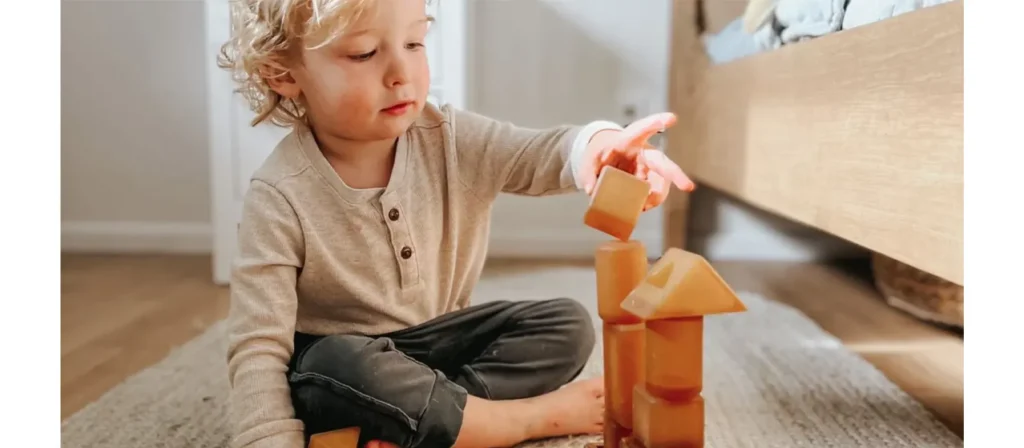
Activities to Improve Your Child’s Visual-Spatial Intelligence
- Map Drawing and Navigation
Ask children to draw a simple map of their room, house, or school. Then, give directions for them or a peer to follow, like a homemade treasure hunt. This develops mental mapping and directional skills. - Room Redesign Projects
Let students sketch out a redesign of their bedroom or a classroom layout. They can think through เฟอร์นิเจอร์ห้องเรียน placement, spacing, and flow, like mini-interior designers using scale and proportion. - Paper Folding and Symmetry Creations
Introduce activities like folding paper to create symmetrical shapes, cutting snowflakes, or designing mirrored images. These tasks strengthen concepts of reflection, rotation, and bilateral balance. - Obstacle Course Design
Have children plan and set up an obstacle course using cones, chairs, or ropes. The process of visualizing space, distance, and safe pathways helps sharpen spatial planning and physical coordination. - Cooking and Food Arrangement
Cooking isn’t just a life skill—it’s a spatial one. Measuring, pouring, arranging ingredients, and even decorating cookies involve sequencing, spatial estimation, and pattern recognition.
These types of activities aren’t just academic—they’re deeply engaging. Children become immersed in building, testing, and adjusting their ideas in a physical space. They also offer built-in opportunities for self-correction, which enhances their ability to revise and visualize outcomes mentally.
3. Use Visual Language in Everyday Conversations
Spatial understanding grows not just through activities but also through language. Every day, conversations offer countless chances to introduce and reinforce spatial terms. Say things like:
- “Can you place the ball behind the chair?”
- “Which object is closest to the window?”
- “Let’s flip this shape and see what it looks like.”
By weaving in terms like above, beside, between, rotate, and angle, you help children internalize spatial logic through language that becomes second nature.
4. Fostering Artistic and Spatial Creativity
Art, design, and visual storytelling are powerful avenues for strengthening visual spatial intelligence. Encouraging a child to draw a comic strip, create a blueprint for their dream home, or paint a scene from imagination allows them to practice spatial planning and visual memory. These experiences train the brain to think in layers, angles, and proportions. Creativity isn’t just about self-expression—it’s also a cognitive workout that challenges spatial visualization and sequencing.
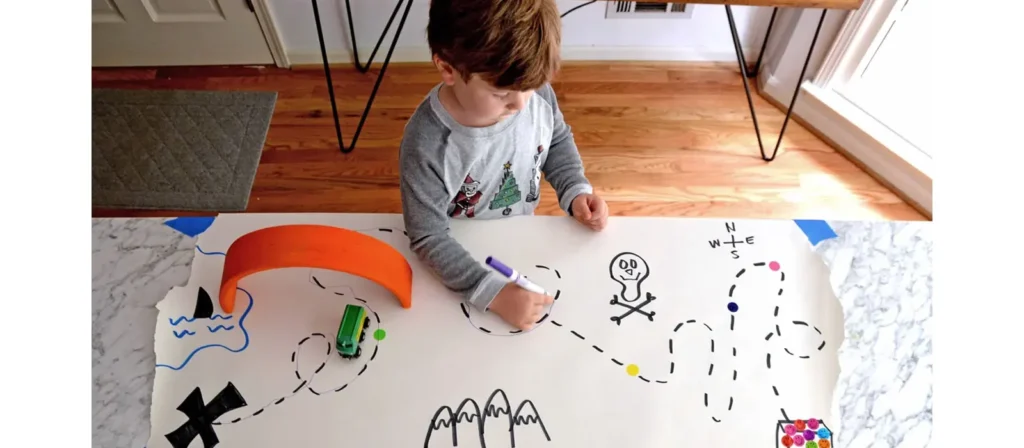
5. Involve Children in Real-Life Spatial Challenges
The best learning sometimes happens outside the classroom. Real-world experiences are rich with spatial tasks that feel authentic and meaningful. Invite children to:
- Help arrange furniture in a room.
- Read a map on a hike or while traveling.
- Estimate the size of boxes while packing.
- Sort kitchen items by size or shape.
These day-to-day activities reinforce spatial concepts naturally, allowing children to apply what they’ve learned in new and unpredictable contexts.
6. Provide Scaffolded (Step-by-Step) Challenges
One of the most effective ways to support their development is by offering scaffolded, step-by-step challenges. This approach involves breaking down a larger spatial task into manageable stages, allowing the child to gain confidence and clarity at each level before moving on.
For example, instead of asking a student to build a complex 3D model from scratch, begin with simple shapes and structures. As they master the basics of alignment, symmetry, and rotation, they can advance to more demanding tasks that require strategic planning and higher-order visualization. This gradual increase in difficulty keeps learners engaged while reducing overwhelm, fostering both skill acquisition and a sense of accomplishment.
7. Use Positive Reinforcement
Encouragement is essential when children are developing new cognitive skills. Visual spatial tasks can be complex, especially for learners who aren’t naturally strong in this area. That’s why every improvement—no matter how small—should be acknowledged.
Simple praise like “You rotated that perfectly!” or displaying their drawings in the classroom can boost motivation. Consistent, specific feedback helps children see their growth and inspires them to keep trying, even when tasks feel challenging.
8. Track Progress Through Visual Records
Since spatial intelligence is highly visual, it makes sense to track development using visual methods. Collecting drawings, models, or before-and-after photos allows children to see how their skills improve literally.
This kind of portfolio builds self-awareness and encourages reflection. For teachers and parents, it also provides a concrete way to assess progress without relying solely on test scores or verbal explanations.
รับแคตตาล็อกฉบับเต็มของเรา
หากคุณมีคำถามหรือต้องการใบเสนอราคา โปรดส่งข้อความถึงเรา ผู้เชี่ยวชาญของเราจะตอบกลับคุณภายใน 48 ชั่วโมง และช่วยคุณเลือกผลิตภัณฑ์ที่เหมาะสมกับคุณ
9. Leverage Technology and Educational Apps
Technology, when thoughtfully integrated, can serve as a powerful extension of spatial learning. Educational apps, interactive platforms, and digital tools offer dynamic environments where children can manipulate objects, explore virtual spaces, and solve visual puzzles with immediate feedback. Unlike traditional methods, these platforms often allow children to test ideas, make mistakes, and retry in a way that feels playful rather than pressured.
Digital drawing programs and geometry software let students experiment with shape, scale, and perspective—concepts that are difficult to grasp abstractly. Meanwhile, certain video games challenge players to navigate 3D environments, reinforcing depth perception, orientation, and strategic movement. These experiences not only improve visual-spatial intelligence but also build digital fluency. When used intentionally, technology doesn’t replace hands-on learning—it complements it.
How to Assess Visual Spatial Intelligence?
Evaluating visual spatial intelligence requires more than observing a child’s drawing skills or interest in puzzles. Since this type of intelligence reflects how children perceive and mentally manipulate space, effective assessment should look at how they process, understand, and respond to spatial information across various contexts. Both formal and informal methods play a role in creating a complete picture of their strengths and needs.
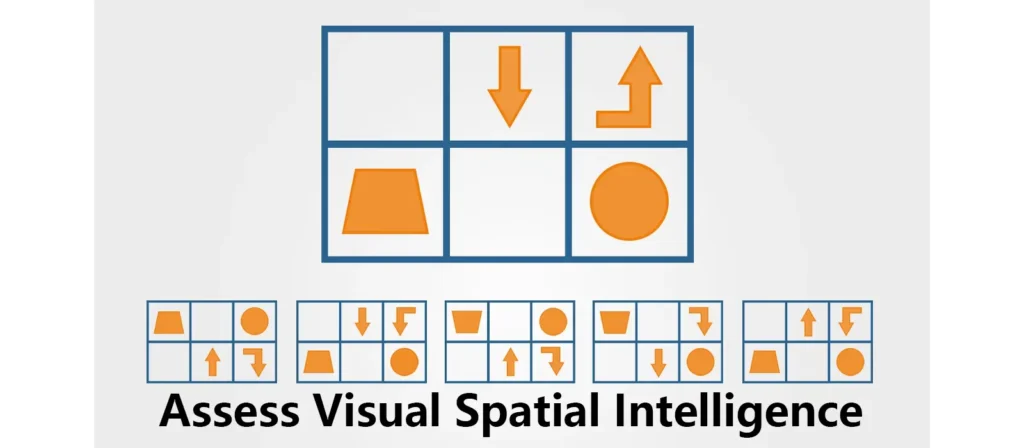
Look for Spatial Thinking in Daily Activities
Much of a child’s spatial ability reveals itself through ordinary behaviors. Pay attention to how they navigate unfamiliar spaces, build structures, or solve visual problems. Children with strong spatial skills tend to visualize solutions before acting. For instance, they might rearrange puzzle pieces mentally before placing them or map out a route before walking through a space.
When these patterns are observed consistently, it’s a good sign that the child is developing a strong internal sense of space and structure.
Use Open-Ended Tasks to Observe Reasoning
One of the most revealing ways to assess spatial intelligence is by giving children open-ended challenges. Instead of looking for one correct answer, focus on how they approach the problem. Ask them to design a layout, describe how to rotate an object, or explain what a shape would look like from a different angle.
Their ability to visualize, plan, and communicate these mental operations offers insight into their spatial reasoning. Watch how they think, not just what they produce.
Incorporate Visual-Spatial Assessments in Academic Contexts
Standardized tools also exist to evaluate spatial intelligence formally. Tests like block design tasks, visual matrix reasoning, or mental rotation exercises are commonly used by psychologists and educational specialists. While these are often conducted in more structured settings, they can provide valuable data when combined with classroom observation.
These assessments can be beneficial in identifying gifted learners or diagnosing spatial learning difficulties, providing a basis for targeted support.
Seek Input from Multiple Sources
No single assessment tells the whole story. A teacher might notice a child’s strength in geometry, while a parent sees them navigating mazes with ease. Gathering insights from various people who interact with the child in different settings offers a fuller understanding of how visual spatial intelligence shows up in real life.
These combined perspectives help ensure that both talents and challenges are noticed early and supported appropriately.
Track Growth Over Time
Assessment isn’t just about identifying current ability—it’s also about measuring growth. Documenting how a child’s spatial work evolves can reveal patterns that aren’t obvious from one-time tests. Collecting drawings, photo evidence, or video clips of problem-solving sessions helps illustrate progress and encourages reflection.
When children see how far they’ve come, they’re more likely to stay motivated and engaged. For educators and parents, this record offers a powerful way to shape future instruction and interventions.
Educational Toys That Support Visual Spatial Intelligence Development
Choosing the right toys can significantly strengthen a child’s visual spatial intelligence. These tools aren’t just for fun—they’re brain training disguised as play. Below are categorized types of ของเล่นเพื่อการศึกษา, each targeting specific spatial skills and ready to be paired with visual examples or images.
Construction and Building Toys
These toys help children explore structure, balance, and spatial relationships by allowing them to physically create, stack, and connect parts. They develop skills in symmetry, shape recognition, and mental planning.
- Wooden building blocks
- Magnetic tiles
- Interlocking plastic bricks
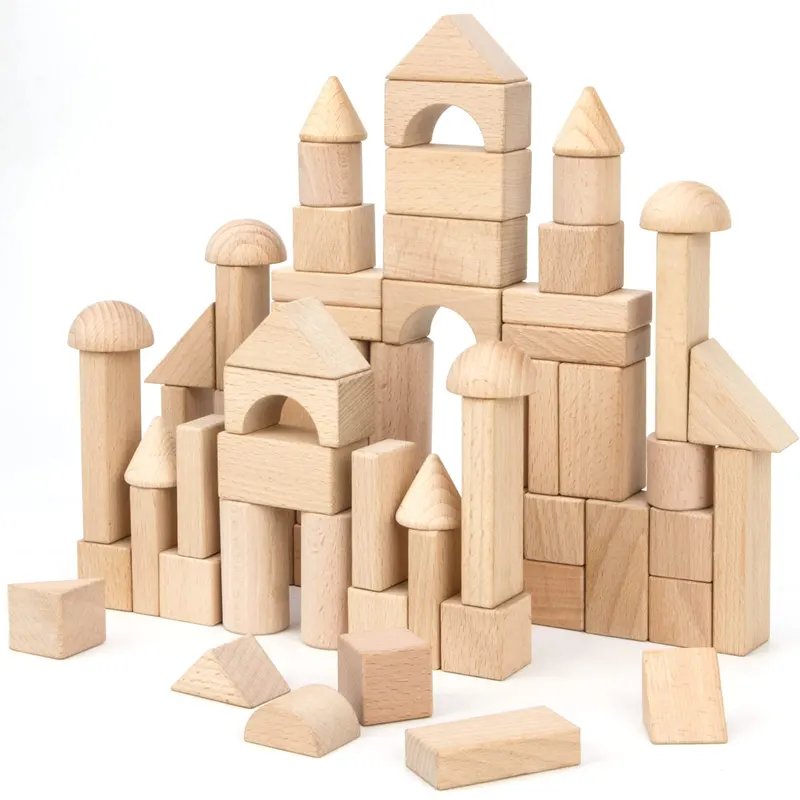
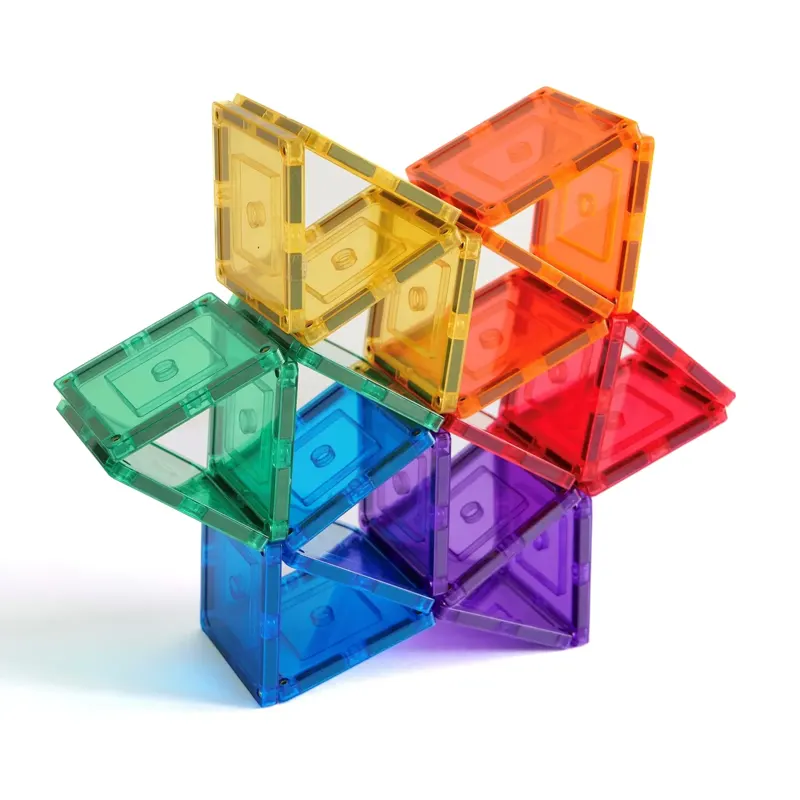
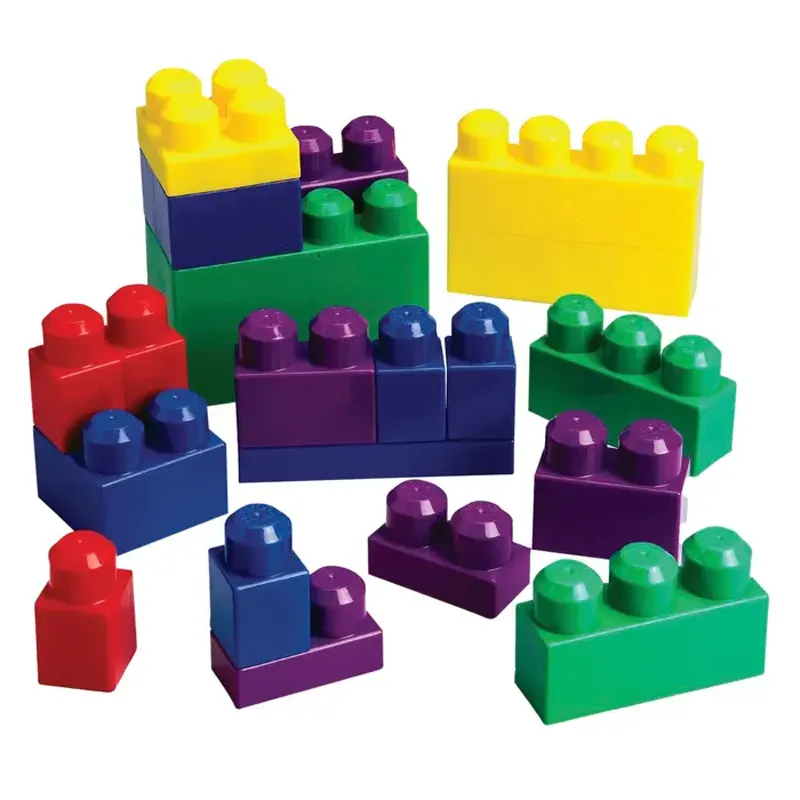
รับแคตตาล็อกฉบับเต็มของเรา
หากคุณมีคำถามหรือต้องการใบเสนอราคา โปรดส่งข้อความถึงเรา ผู้เชี่ยวชาญของเราจะตอบกลับคุณภายใน 48 ชั่วโมง และช่วยคุณเลือกผลิตภัณฑ์ที่เหมาะสมกับคุณ
Pattern and Sequencing Toys
Toys that involve repeating arrangements or order-based challenges build children’s pattern recognition and sequencing abilities—two key components of spatial reasoning.
- Mosaic pattern boards
- Pegboard design sets
- Shape and color sequencing toys
- Bead lacing and pattern cards
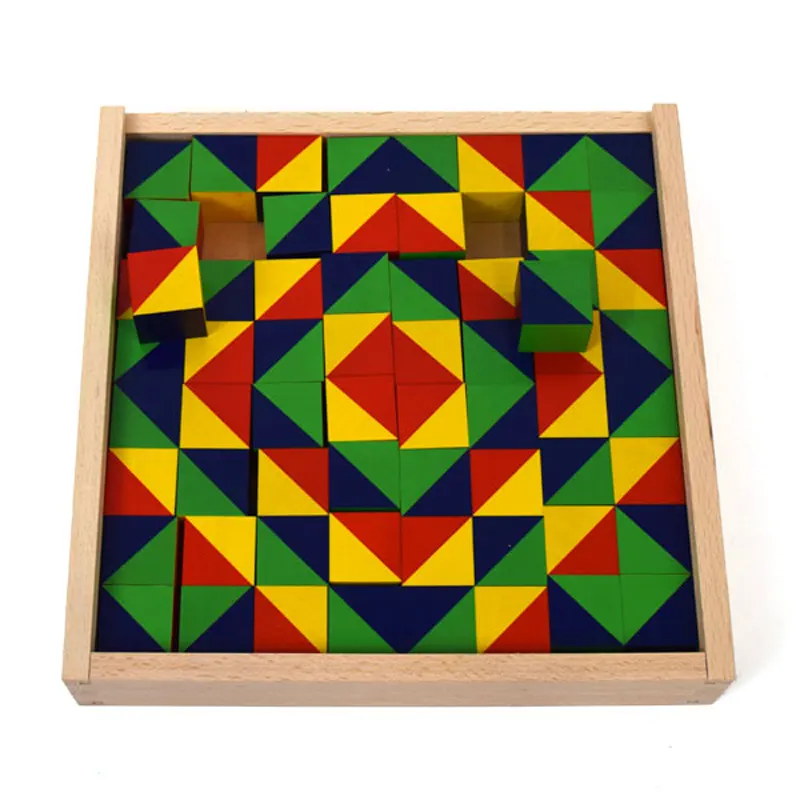
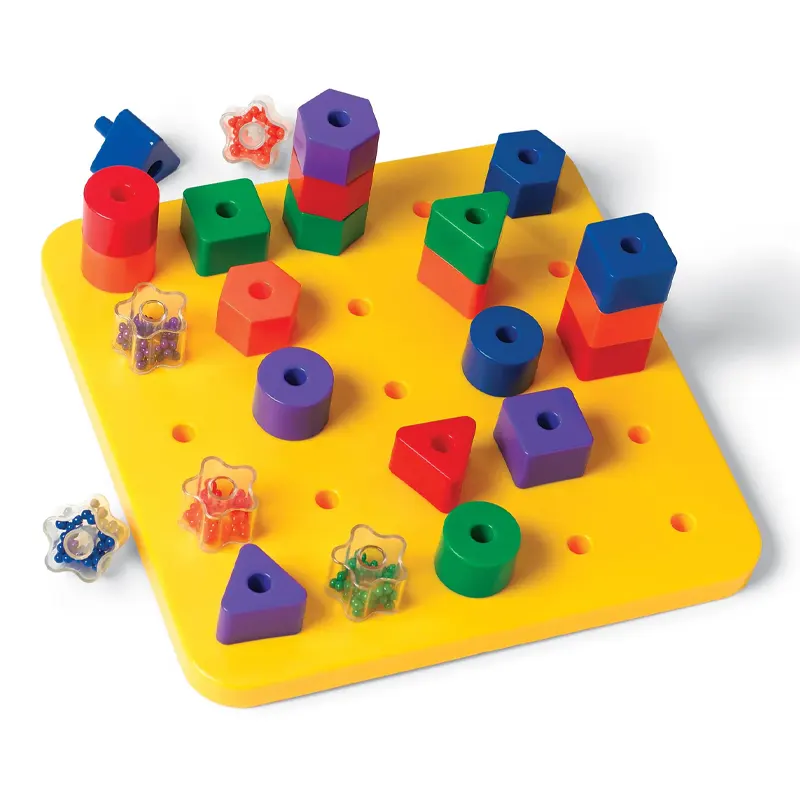
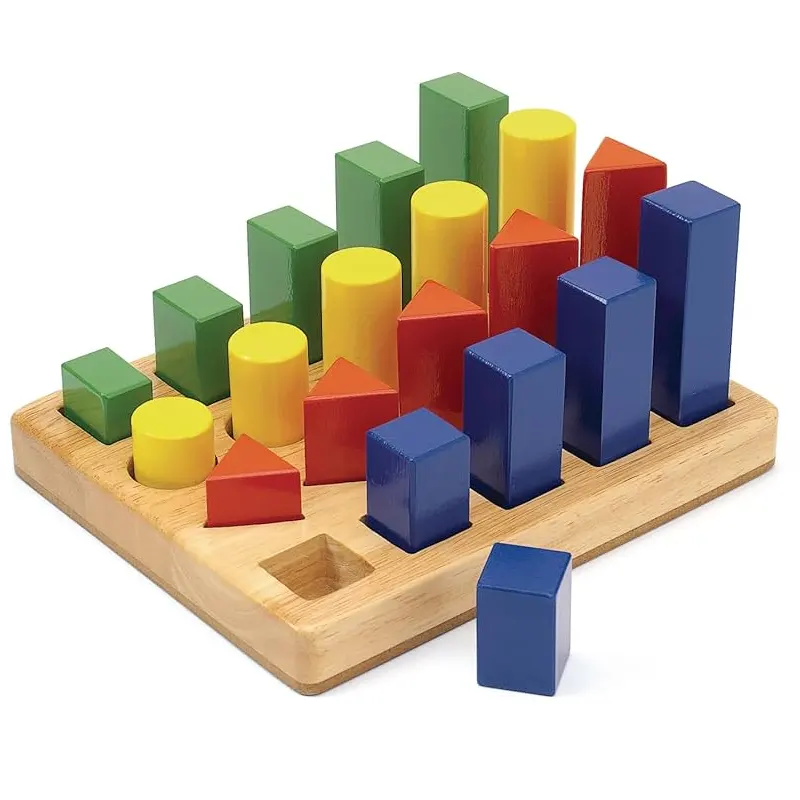
Puzzle-Based Spatial Toys
Puzzles challenge children to rotate, flip, and fit pieces based on mental visualization. These toys improve the ability to manipulate images in the mind before solving a problem physically.
- Puzzles with increasing complexity
- Tangrams and shape sorters
- Interlocking 3D brain puzzles
- Cube puzzles
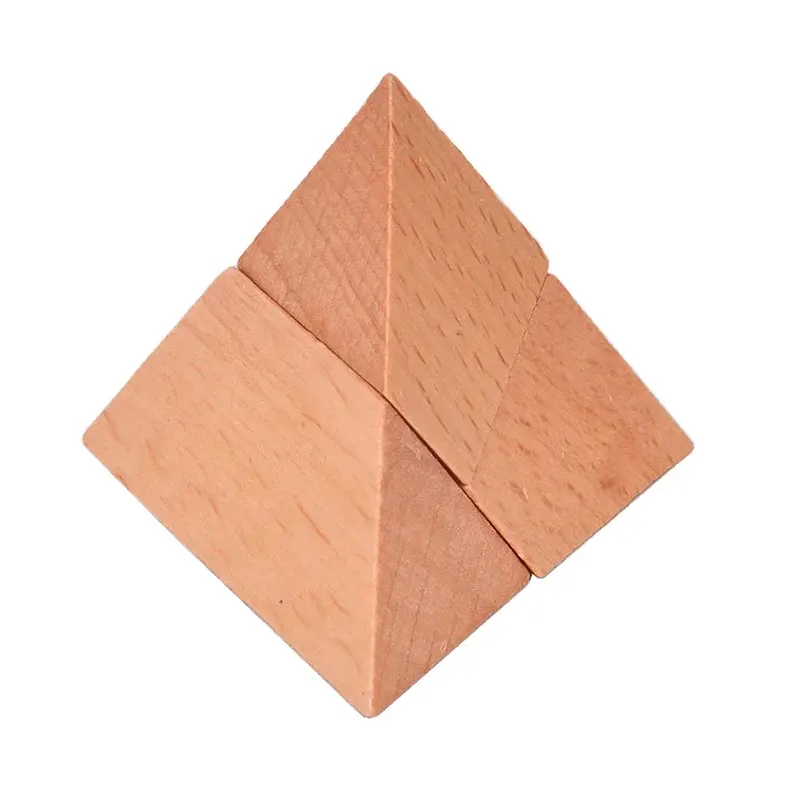
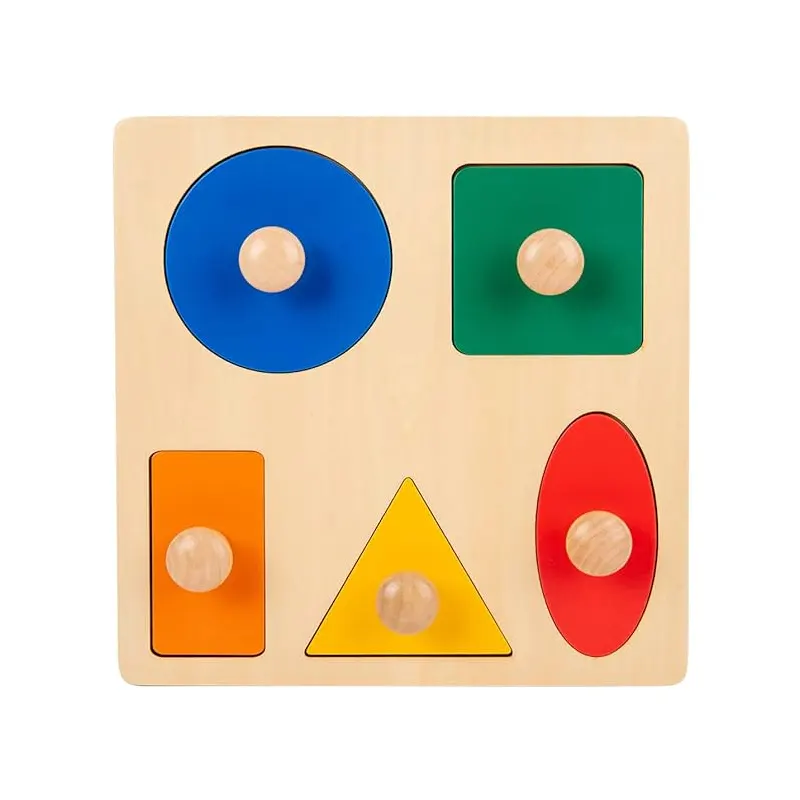
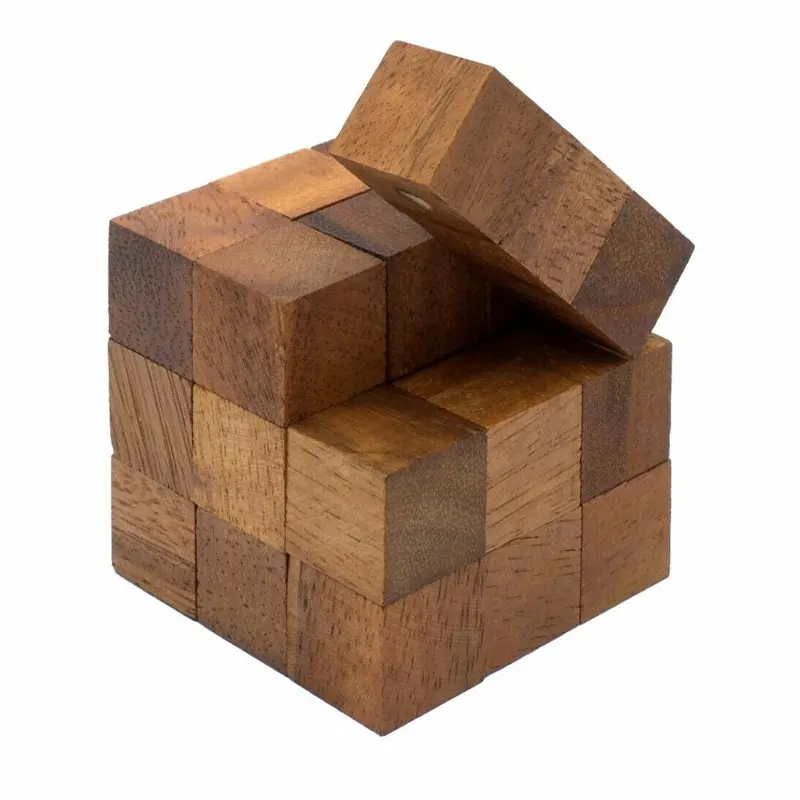
Movement-Integrated Spatial Toys
Some toys blend physical activity with spatial planning, helping children connect body movement to space awareness. These are particularly effective for kinesthetic learners.
- Life-size floor mazes
- Marble run construction sets
- Balance-based stacking challenges
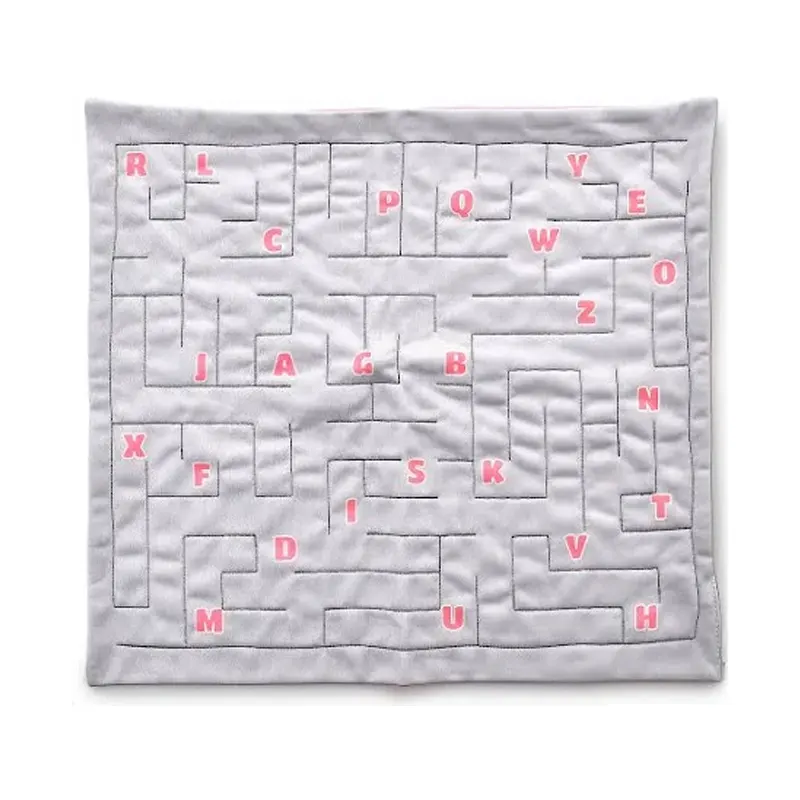
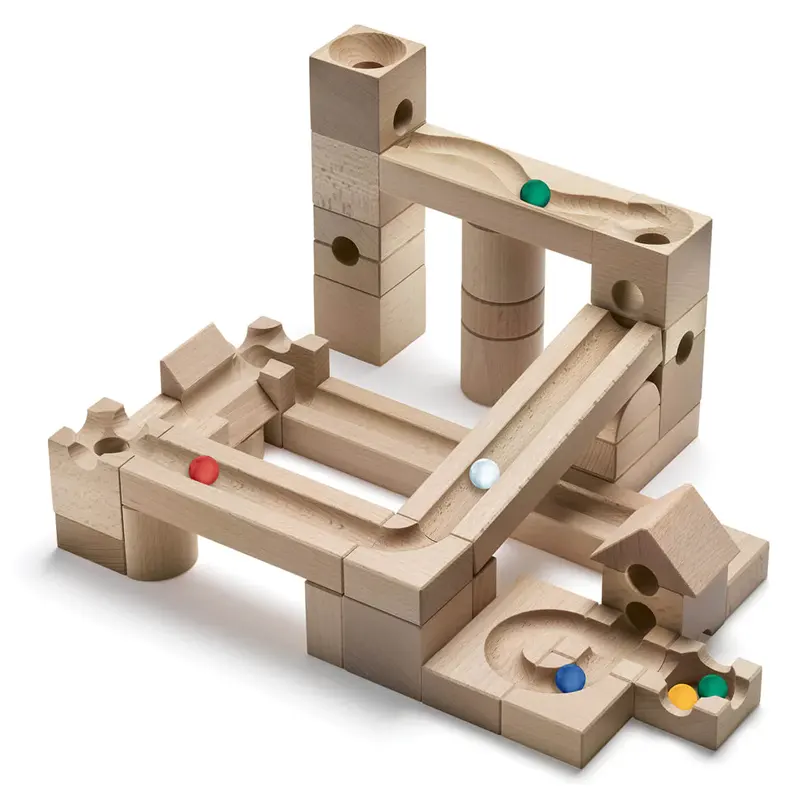
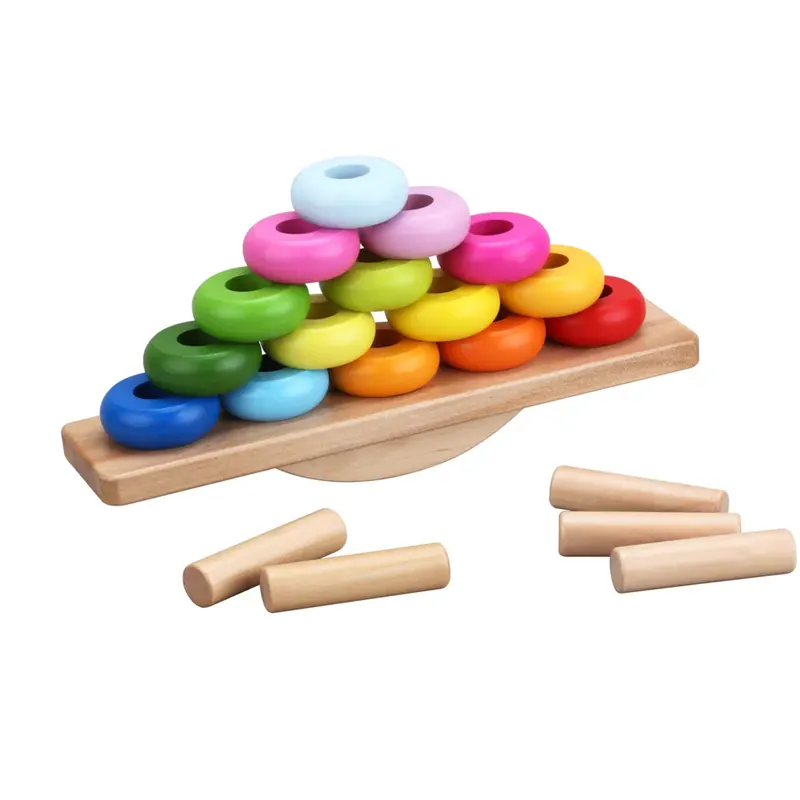
คำถามที่พบบ่อย
- What is visual spatial intelligence in simple terms?
Visual spatial intelligence is the ability to visualize objects in space, understand how they relate to each other, and mentally manipulate them. It helps people think in pictures rather than just words or numbers. - How do I know if my child has strong visual spatial intelligence?
Children with strong visual spatial intelligence often enjoy puzzles, building, drawing, and navigating spaces. They may prefer visual instructions and show an early understanding of shapes, maps, or patterns. - Can visual spatial intelligence be improved?
Yes. With the right activities—like block play, drawing, origami, and puzzle solving—children can strengthen their visual spatial skills over time. - Why is visual-spatial intelligence essential for early childhood development?
It supports learning in math, science, reading, and art and helps children understand spatial relationships, organize their environment, and solve problems creatively. - What are some signs of poor visual spatial intelligence?
Children may struggle with handwriting, puzzles, understanding diagrams, following directions, or organizing personal space. - What are the best educational toys to support visual spatial development?
Toys like Lego, tangrams, magnetic tiles, 3D puzzles, and drawing kits are excellent tools to enhance visual-spatial intelligence. - How is visual spatial intelligence different from visual learning?
While both involve visual processing, visual-spatial intelligence focuses more on the mental manipulation of space and structure, whereas visual learning emphasizes absorbing information through images and diagrams.
บทสรุป
Visual spatial intelligence is a vital yet often under-recognized form of cognitive strength. It plays a foundational role in how children perceive the world, solve problems, and express creativity. From tying shoes to navigating a crowded room, from designing a model to understanding geometry, spatial thinking influences both daily tasks and academic success.
The goal of understanding visual-spatial intelligence isn’t to label children as “visual” or “not”—it’s to notice how they think and offer tools that meet them where they are. For some children, spatial skills come naturally. For others, they require time, exposure, and encouragement. But with the right activities, supportive environments, and consistent practice, all learners can grow in this area.
Helping a child strengthen their visual spatial intelligence isn’t just about better grades or neater drawings—it’s about giving them another way to think, learn, and express themselves. And that kind of growth will follow them far beyond the classroom.

